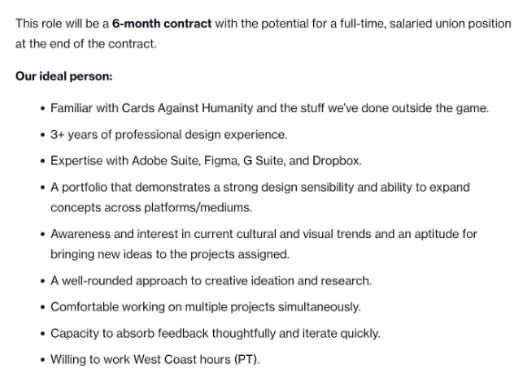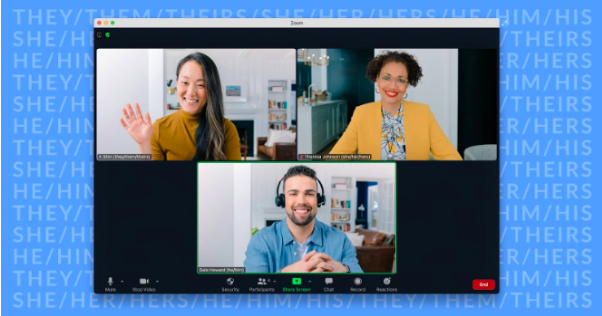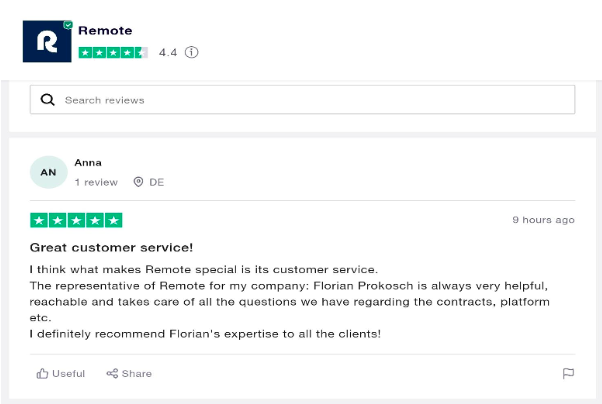Remote work has become the new normal. Both small and big businesses now allow employees to work from home. But a remote workforce brings with it another challenge: recruiting. How can you remotely and consistently hire and onboard quality candidates?
At NoHQ, we discuss everything you need to know to get the best remote talent on your team. With that, your business can dominate its space. Read on.
Why remote work is here to stay—and why recruiting for remote jobs is so important
A 2017 report by Harvard Business Review showed that 80% of employees would leave or take a job offer based on whether they were allowed to work from home. Also, 88% of these employees considered flexible work the most important employee benefit.
What the pandemic really did was speed up the adoption of a working system that was already popular. Shortly after COVID-19 became a global emergency, 74% of companies began arranging to adopt remote work partially or completely. After the pandemic, FlexJobs found that 31% of employees would now prefer a hybrid work setting, while 65% would choose to work remotely full-time.
More importantly, the pandemic led business leaders to make two major changes:
(1) Accept the benefits of remote work. It was once thought that time spent at the workplace was the best measure of employee productivity, but remote work changed that by getting business owners to focus on results. In addition, recruiting for remote jobs widens a company’s talent pool and helps the company save money in the process.
(2) Adopt new values and improve company culture. In a remote work setting, business executives have to ensure that the work environment is designed for every member of the company regardless of their location. The productivity company Doist takes this to the next level by ensuring that its values are emphasized at every stage of the hiring process. And from a salary standpoint, companies now also offer six-figure remote jobs.
How does a recruiter for remote work differ from a recruiter for non-remote work?
As a recruiter, your general objective is to find the right people for certain positions in an organization. Recruiters for remote and non-remote work are in one or both of these categories:
(1) Recruiter for the company vs headhunter: Recruiters could work as hiring or talent managers for specific companies or they could operate as part of a recruiting agency (like Robert Half).
(2) General vs special recruiter: Recruiters, especially those who work for staffing agencies, could hire talent in various fields (like Vaco) or focus on one industry (like AMN Healthcare).
The difference is that a recruiter for remote work focuses on finding people who can do the job remotely. This means that such recruiters must have at least two abilities that a recruiter for non-remote work may not have:
- Ability to recruit from a wider talent pool. There’s a clear difference between trying to find talent in your city or state and opening your doors to people everywhere. As such, both the number of people eligible for the job and the number of people who end up applying would be much higher. Doist, for instance, receives thousands of applications yearly for fewer than 20 open positions.
- Ability to make the right decisions based on digital interaction. Recruiters for remote jobs have to communicate with applicants located several miles away, and it is usually not practical to have these applicants travel to the recruiter’s city or country for an interview. So, they are left to make the best use of online platforms and tools to assess an applicant’s fit with the job in question.
How do you recruit remotely?
Finding the right people from a global audience can be tough, but it doesn’t have to be. Here are the four stages in recruiting for remote jobs, in any industry, and for any company.
Stage 1: Finding remote workers—or ensuring that remote workers find you
How you choose to find talent will determine how the rest of the hiring process goes, and being specific in your search will prevent any misunderstanding of your needs. We recommend that you take the following three steps:
- Clearly define what remote work means to your company. It should come as no surprise that ‘remote’ and ‘hybrid’ work may be confused for each other, considering that hybrid work is still a popular company choice. As a recruiter, you should provide a clear interpretation of what remote work at your company entails—for instance, whether the employee can work from anywhere every day or whether they must show up at an office on certain days or weeks.
- Develop a clear and specific job description. Your job ad must clearly describe what needs to be done, how the job will be done remotely, the tools or platforms to be used for work, and the personal qualities necessary to get the job done. See an example from a Mid-Level Designer job ad on Dribble.

- Be strategic about the job posting. From large, all-purpose job boards like Ziprecruiter to remote-specific sites like FlexJobs or even jobs with only 4-day weeks, there are so many platforms to get your job posting in front of a global audience. To improve your results, choose the most appropriate platforms to post a job based on your industry, target employees, and the job description. For instance, WeWorkRemotely is a remote-specific platform for jobs in software engineering and product design.
Stage 2: Attracting the right remote talent to your business
It is one thing to get your job ad out there, and it is another to attract the best people to apply. As a recruiter, you should ensure that your desired candidates do not skim through your job posting and move to the next. Apply the following three strategies to get them to send an application, which you can sort for the best applicants and find those who are fit for the position:
- Strengthen your online branding. Your online presence should communicate the quality of not only your business offering but also your company itself—its culture, values, and vision. Just like Automattic, you should convince applicants that your company is worth joining by, for instance, posting employee testimonials on your website or social media pages.
- Define the right candidate. Ensure that you agree with the business executives on the expectations for the position, the experience of the candidate, and their skill level.
- Use an applicant tracking system. Platforms like Pinpoint and Workable automate a significant portion of the hiring process. By tracking the application of every candidate, you can filter for only those who meet your requirements and then proceed with them to the interview stage.
Stage 3: Interviewing and selecting the best candidates
Of course, this is the most important part of the hiring process. You can only hire a fraction of the many applicants who might be a great fit for the opening, and to get the right people, make sure to remember these strategies:
- Plan the interview. Ahead of the interview date and time, establish how you will conduct the interview, what platforms you need, and what tools the candidate should have. The technologies chosen should be easy for all parties to access. If you wish to conduct a video interview, platforms like Zoom and Google Meet let you schedule a meeting time and date with reminders.

- Intentionally check for the necessary skills. When hiring employees for remote work, you always want to hire people who agree and fit with the company culture. You also want people who can operate without direct supervision, can work virtually with teams, are skilled with technologies, can build a strategy to solve problems quickly, and can communicate with staff at all levels of the company. Using tools like ThriveMap and Hirevue, ask specific questions and design assessments to determine if the candidates possess these and any other important skills. If there are technological tools and platforms necessary to do the job, you can also test their ability in those areas.
- Test candidates in unexpected ways. As with any other interview, you can be sure that candidates would prepare based on how they believe they would be assessed. Throw some unforeseen twists into the interview process by requesting psychometric test results, issuing a 24-hour assignment, adding a trial period for the job, or having a senior executive join you for the interview.
Stage 4: Onboarding your remote employees
After you have selected your new employees, it is important to properly welcome them to the company. The first impressions from such an onboarding experience are usually unforgettable, and they motivate the employee to get started doing meaningful work from anywhere. Here are two things we think you should keep in mind:
- Consider the difference in time zones. If you have hired multiple employees simultaneously, a single onboarding session might not work if they are in different time zones. In this regard, take advantage of asynchronous communication to provide readily available content for newbies and consider holding a brief virtual meeting to welcome them personally, at a time that works for everyone.
- Take care of the paperwork. It is important to settle all legal and financial matters as early in the process as possible. For employees in a different country, employ the services of an external agency (such as Remote) to address any issues with local laws, contract arrangements, and income taxes. Learn from Anna's review about how her company uses Remote.

Start recruiting the best, worldwide
Recruiting for remote jobs can seem like a tough task, especially because your reputation as a talent-seeker is tied to the employees’ output. You may be worried about connecting with people from other countries, about the fairness of your hiring process, or about the future of the hired employees in the company. With our tips on recruiting for remote jobs, you can be confident that you will find and hire people who are not just good but excellent at their work.
At NoHQ, we reassure you that you are in control by providing you with the necessary resources and continuous support. Explore our free resources and guides to learn the best practices for every facet of remote work, and get better results for your company.
